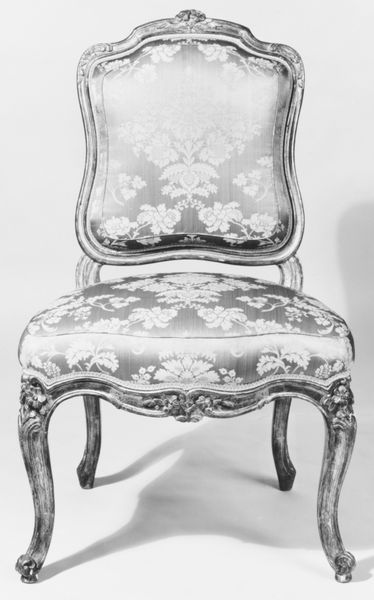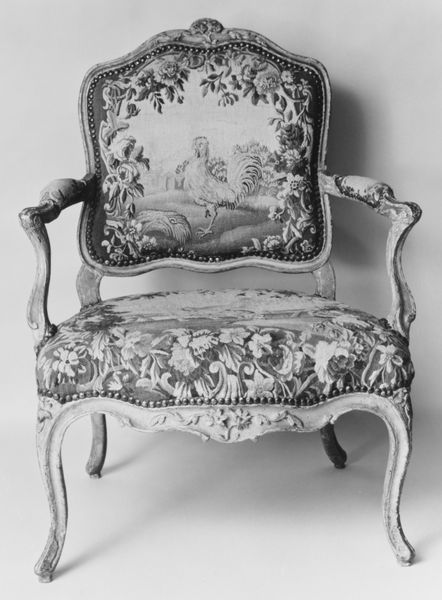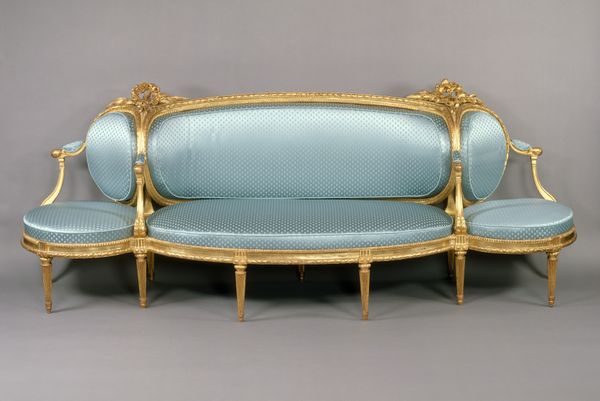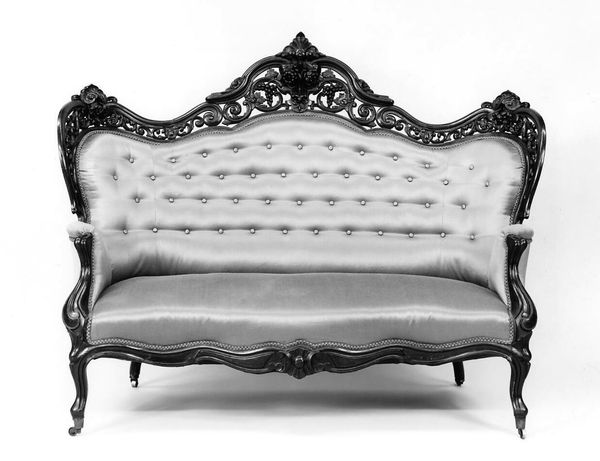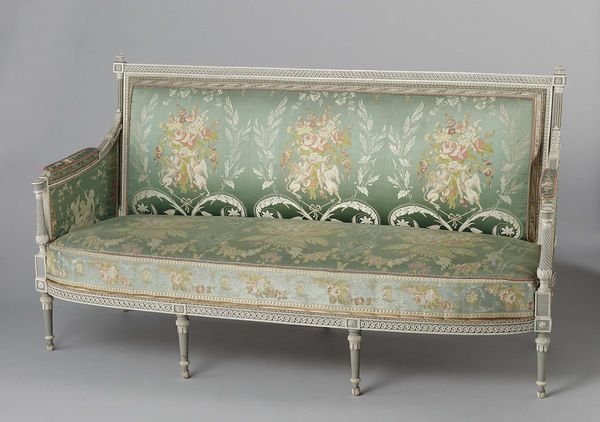
Dimensions: Overall: 38 7/8 × 92 1/2 × 25 7/8 in. (98.7 × 235 × 65.7 cm)
Copyright: Public Domain
Curator: At first glance, I notice a gentle, almost melancholic, symmetry. The floral patterns combined with what appears to be sculpted woodwork invoke a quiet formality. Editor: Indeed. What we're observing is a sofa, part of a decorative set crafted between 1825 and 1853. It exemplifies the Rococo revival, with its elaborate carvings and focus on ornamentation. You see examples like this prominently displayed here at The Metropolitan Museum of Art. Curator: The textile work is intriguing. The pale coloration enhances the Rococo character. But I am curious about its place within the larger decorative-art ecosystem during that era. Was this meant for daily use or ceremonial display? Editor: Sofas of this caliber functioned on both axes; certainly, there was an aspiration for functional domestic use. As high society moved between estates, luxury followed, serving to articulate power as much as domesticity. The floral textiles, complemented by the delicate, gilded woodwork, were clear indicators of wealth and cultivated taste. Curator: Let's examine this composition. The back panel, with its centered motif, is remarkably framed within that structure, lending the whole object a unified sense of purpose, wouldn't you say? The placement, balance, and thematic resonance is palpable, almost monumental in its implications, even as its scale would imply some more domestic setting. Editor: It is quite intentional! If we contextualize it with the prevailing social conventions of the time, imagine ladies in elaborate gowns, their postures deliberately poised upon its cushions. This sofa also mirrors larger debates happening around gender and space—an interesting site where personal life merges with these social dictates. It's not merely furniture but also a potent symbol of status, class and refinement. Curator: You know, viewing it this way does deepen its character. Considering both its form and its functions refines my reading of this particular artifact. Thank you. Editor: Always. By understanding art in its complete social frame, it offers deeper understanding—and reveals its lasting importance.
Comments
No comments
Be the first to comment and join the conversation on the ultimate creative platform.




